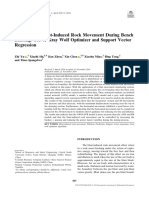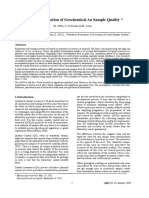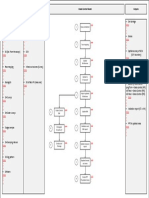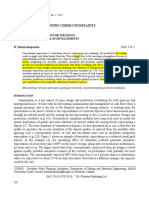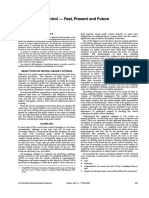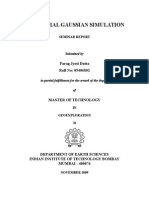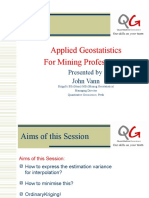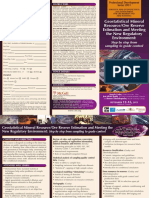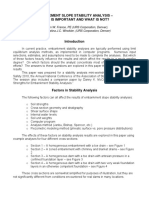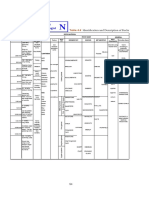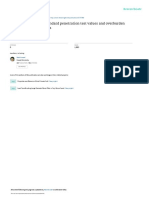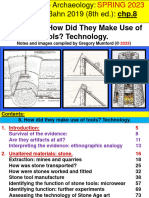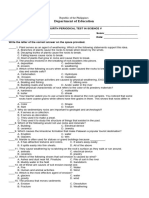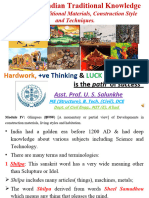100% found this document useful (1 vote)
500 views4 pagesAdvanced Mineral Resource Estimation
This document provides information about an advanced mineral resource estimation training course. The course teaches statistical sampling techniques, indicator estimation, and conditional simulation methods used to assess geological properties and risk in mining projects. The course assumes participants have experience in basic estimation methods and mineral resource modeling software. Key learning objectives include understanding sampling distributions, indicator estimation, and setting up and interpreting conditional simulation models. Participants will learn how to apply these advanced techniques but are not expected to gain full competence within the one-week course. Required software, technical skills, and experience levels are also outlined.
Uploaded by
Victor Alejandro Faundez OlivosCopyright
© © All Rights Reserved
We take content rights seriously. If you suspect this is your content, claim it here.
Available Formats
Download as PDF, TXT or read online on Scribd
100% found this document useful (1 vote)
500 views4 pagesAdvanced Mineral Resource Estimation
This document provides information about an advanced mineral resource estimation training course. The course teaches statistical sampling techniques, indicator estimation, and conditional simulation methods used to assess geological properties and risk in mining projects. The course assumes participants have experience in basic estimation methods and mineral resource modeling software. Key learning objectives include understanding sampling distributions, indicator estimation, and setting up and interpreting conditional simulation models. Participants will learn how to apply these advanced techniques but are not expected to gain full competence within the one-week course. Required software, technical skills, and experience levels are also outlined.
Uploaded by
Victor Alejandro Faundez OlivosCopyright
© © All Rights Reserved
We take content rights seriously. If you suspect this is your content, claim it here.
Available Formats
Download as PDF, TXT or read online on Scribd
/ 4















